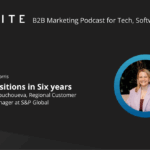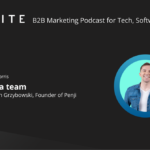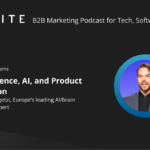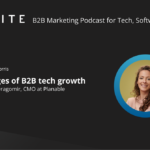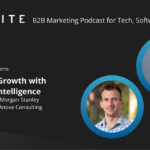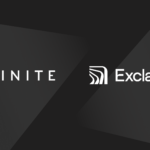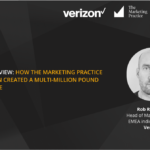Patrick is the Head of Marketing at Everledger, a B2B technology company helping businesses surface and converge asset information, using a symphony of secure technologies including blockchain, AI, and IoT.
In his interview, Patrick shared his breadth of knowledge in aligning company values with a marketing strategy.
The interview covers:
- Practical steps to determine company values and align them with marketing:
- Start by focussing on each individual employee as they represent the company at a personal level
- Nurture the company culture that stems from employee needs to find company values
- Integrate these company values with larger business objectives
- Translate the values into marketing by fitting them to your target audience
- Use a balance of data analytics AND creativity to establish a personal connection with customers
- Company values can be weakened by: a lack of internal collaboration, poor communication, geographical distance, and incohesive product lines
- Patrick gave us a clear example of how he overcame some of these challenges throughout his time at Phillips (electronics)
- Organisations who invest in transparency and tech-for-good solutions will thrive in the aftermath of Covid-19
- Everledger is supporting their employees and maintaining a strong company culture throughout lockdown restrictions
FINITE: Hi Patrick! First, could you tell us a bit about your past experience in B2B FinTech and about your current role as Head of Marketing at EverLedger?
Patrick: Fintech is one of the industry verticals that we focus on at Everledger, along with industries such as jewellery, electric vehicles and apparel. The funny thing is that these industries may seem at first glance completely disparate, but the technologies that we work with actually create a bridge between all of them. That’s what we call “Symphony of Technologies” — Blockchain, Internet of Things, AI, intelligent labelling.
It’s a real pleasure for me to collaborate with so many different types of customers and products. Just this last quarter, for example, we had big partnerships announced with the likes of JD.com (Chinese E-commerce giant with 500M+ consumers), GIA (US-based gemological institute), MCQ (British fashion label), and Griffith University (Australian university).
I guess this interdisciplinary collaboration is one of the key aspects that have attracted me to the blockchain world, and my current role in particular. In the past, when I owned a marketing agency, or when I was Head of Marketing for the World Economic Forum or other roles, a constant in my work was exactly this. One minute I’m working on a campaign for, say, the future of financial systems, and the next I’m planning the customer journey for a community of young entrepreneurs…
I just love being able to tune in to different industries and target audiences, and learn a little bit about each one of them! The similarities between them, and challenges facing each type of customer, also become fairly obvious over time.
The other thing about it is that as a marketer, after some time, you really know how to create effective communications for any industry. It doesn’t really matter which one, you just know what to do. You have a process to learn the idiosyncrasies of that industry and audience, and after you get onboarded onto it, in no time you can create campaigns for this industry that you never knew much about previously. At the World Economic Forum, for example, we worked with 23 different industries! Without a process and the know-how, it would be impossible to handle this level of complexity.
FINITE: How have you aligned your marketing strategy with the company values of Everledger?
Patrick: This is definitely a key concern for every CMO, and should form the basis for any marketing plan. A marketing campaign that doesn’t connect with the values of the company is ultimately soulless. So, how to ensure marketing and values are aligned?
Well, in my opinion it all starts with company culture. For smaller companies it has a lot to do with its Founder, when companies are bigger you can look at the history of the company, its successes, what made it great. But in every case, company values are filtered through the way people work together (or not work together), the way they communicate (cameras on or off in a zoom call?), the interaction between teams and regions.
All these things and more are translated in a set of company values, which is something typically the HR team will have added to decks and careers page. But I think this is so important that the Marketing team should study closely these values, and how the company arrived at them. When we’re lucky, we can even participate in the formation of the set of values itself.
Sometimes values are not formalised, or, worst case scenario, they are just a standard set of sentences, created top-down by leadership where employees don’t really feel represented by them. If those values don’t embody all the feelings and attitudes people have about the place they work, they really become no more than empty phrases.
Recently, at Everledger, we set up a cross-functional team with representatives from every office to research and translate our values. We did surveys and in-depth interviews with all employees, held brainstorming sessions, validated with the leadership team and again with all employees, and then formalised the values that we found. It was a very thorough exercise, because we knew we had to get them right, we had to represent all the different views, and we wanted to do this bottom-up.
I’m glad that everyone was very happy with the outcome, our company culture was translated into 4 easy-to-remember values. People are celebrated for demonstrating them in their day-to-day, they receive call-outs at town halls and on slack. Values, as culture, are alive — and we must nurture them.
FINITE: And what happens once you establish what the company values are?
Patrick: Well, once you know your values, you’re on the right path to formulate the marketing strategy! You know what’s important, you know how to stay true to who you are as a company. Of course, not every time you’ll be lucky enough to be able to participate in a thorough exercise like what I just described. So the role of the Head of Marketing is to translate culture, understand who we are, and use that according to the company objectives and target audience’s needs. These are the two other core components of the equation.
In order to proceed with your marketing strategy, you need to know what the company objectives are. This will often come from the CEO and the leadership team, but you’ll also learn a lot by interviewing people from the product, commercial, regional and customer success teams.
And the final component is to know your customer. What makes them tick? What do your competitors deliver to them, or don’t yet deliver? How do their needs differ from location to location or across product lines? Did you actually talk to some of your customers to find out more about them? B2B companies are good because you can actually talk to the CEO of a partner company and establish a personal connection, really get to understand them.
Once you have a good grasp of values, business goals and customer needs, you’re half way there with your marketing strategy. You’ll still need one “little” thing afterwards: creativity. Because marketing is not maths, it’s not easy to create a good concept and certainly there are no formulas. And you need to be unique as well… so creativity is key.
Working with a good team will go a long way. Add a little bit of science (analytics, testing) to creativity, and there you go, you have your strategy! Well, to be honest that’s just the start, isn’t it? A good strategy with poor implementation won’t do you any good. But that’s a whole other story.
FINITE: What is the biggest challenge you have come across so far in the alignment of marketing and company values?
Patrick: The most challenging situation is when the internal company culture (thus, values) is not minimally cohesive. That could happen for a number of reasons, such as weak leadership, poor collaboration between teams, geographical distance, and product lines that are too far apart and don’t really need to follow the same set of “rules”, so to speak.
In that case, the CMO needs to work together with the rest of the leadership team to try to bring people together under the same vision for the company. One personal example where I’ve witnessed such a situation was at Philips, back in the 2000’s. This multibillion dollar company had tens of thousands of employees, around the world, and several product divisions that hardly ever communicated with one another.
In my area, Marketing, I was impacting millions of people with campaigns made for my product division, which was Consumer Electronics (TVs, DVDs, Audio, PCs). But I felt that the consumers from another division, Domestic Appliances (kitchen appliances, cleaning, personal care) were pretty much the same target audience as for Consumer Electronics! So if we’re potentially impacting the very same person with our campaigns, why shouldn’t we work together?
So I knocked on the door of my neighbours from that division, and proposed to work more closely together, aligning on joint marketing campaigns, using the same backend for CRM, agreeing on a common content calendar, and collaborating with a cross-divisional IT team. Eventually I switched divisions and went to Domestic Appliances, and started collaborating with my former colleagues.
It became one of the most successful projects of my career, this collaboration was ground-breaking and, strikingly, the two divisions were eventually merged into one, some time after I had left Philips. I saw this happen from the outside and felt very happy to see that they were working truly as one Philips. It proved to me that my vision for deeper collaboration was the right one!
FINITE: Has Covid-19 impacted your role? If so, how?
Patrick: I’m very lucky to say the impact on my job has been extremely limited. Of course we are all impacted on a personal level, with some friends and family falling ill, our own ability to walk around where and when we want being obviously curtailed, and the level of stress and tiredness being higher than at other times, not least from the sheer preoccupation that a pandemic brings.
But professionally, Everledger has been outstanding regarding its care for all Everlegends — that’s how we call ourselves! Our CEO has demonstrated a level of care and support that I have never seen before in any company, going above and beyond to support all staff, not only in keeping everyone’s jobs but also with regard to their mental health, with transparency, vision and good communications.
And business-wise, this year has been extremely good for us, many partnerships with important companies have come to fruition and staff is extremely motivated, especially now, with all these challenges. I think companies are realising that at times of crises, those that invest in transparency and tech-for-good solutions will stay ahead of the game when the economy picks up again. I guess our key target audience are people who see the glass half full!
To read the first edition of the FINITE FinTech Interview Series, and to learn all about sales and marketing alignment, click here!

